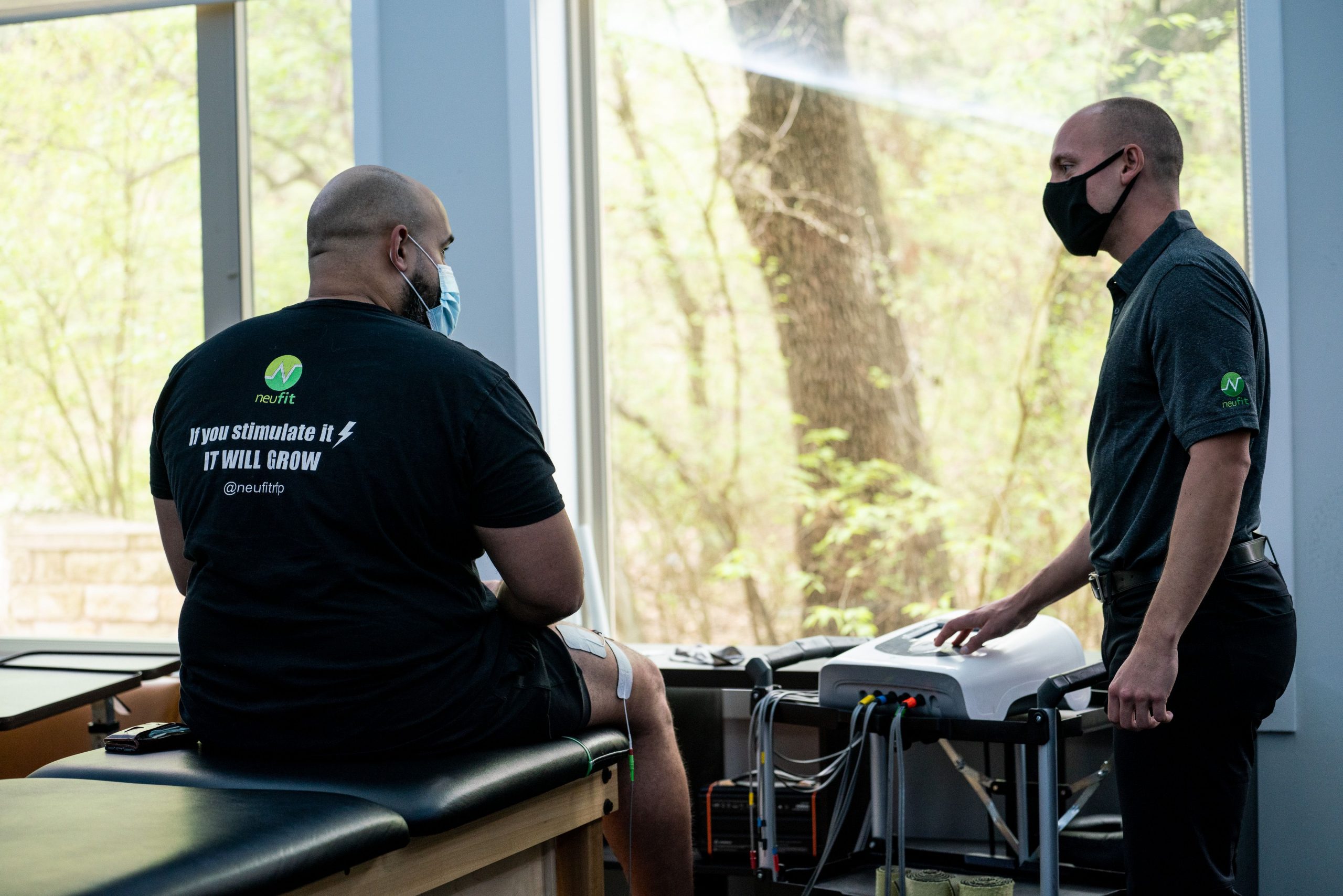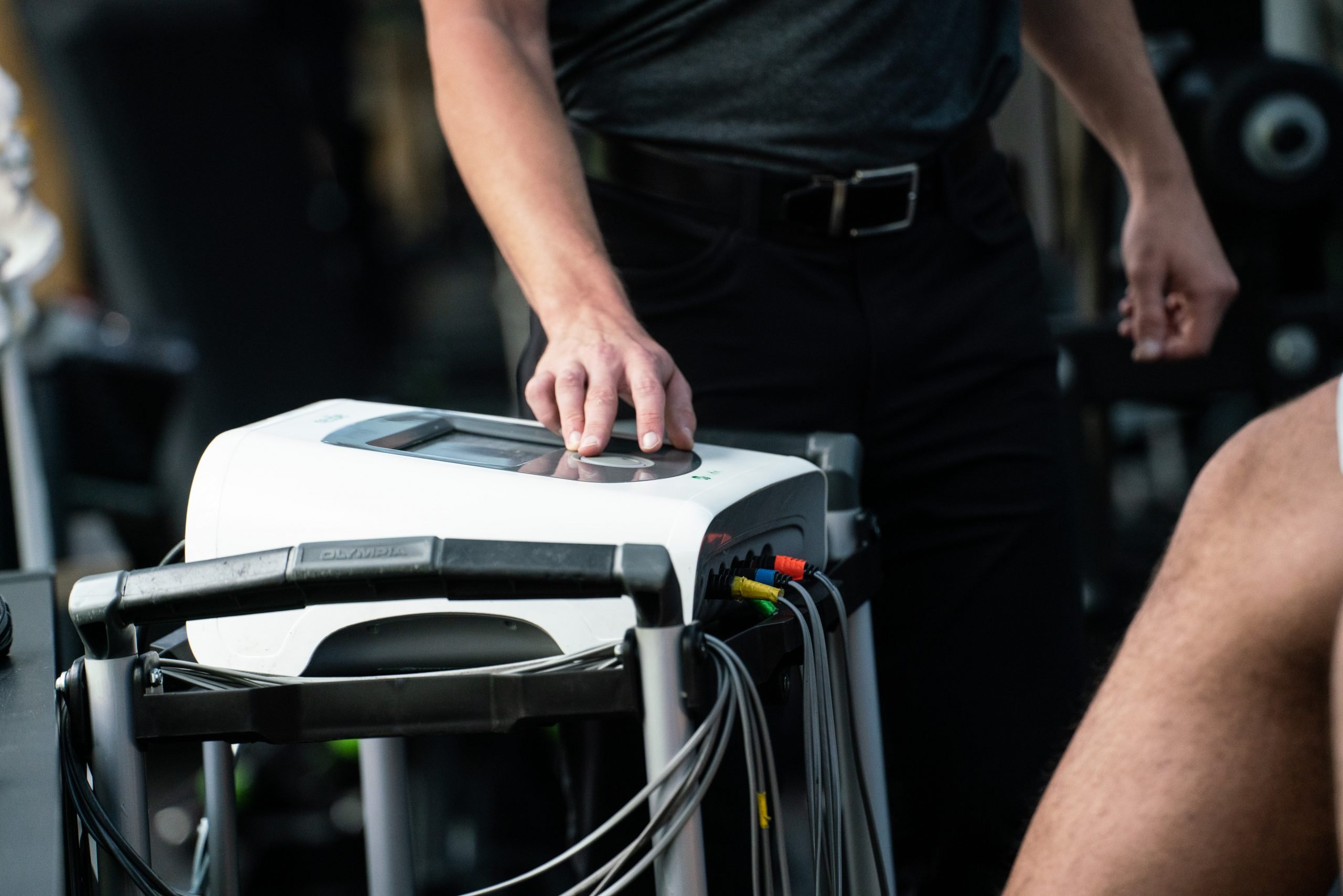In this week’s blog, we look at blood pressure and energy levels and how they relate to the health of our nervous system.
Just as the heart responds when someone starts to train or be physically active, so should the blood pressure. In a healthy nervous system, blood pressure increases in parallel with the heart rate.
Measuring someone’s heartbeat and taking their blood pressure during a workout is a good way to gauge whether the two are increasing in tandem. If they’re not, it’s another sign that the nervous system is compromised and that the brain may be imposing limits on the body.
Since the same neurological mechanisms are responsible for regulating blood pressure and heart rate variability, these two variables often correlate with one another. In other words, differences or improvements in heart rate variability usually precede or happen along with improvements in blood pressure.
An Optimal Level of Blood Pressure
When it comes to blood pressure, as with all the indicators of nervous system health, the goal is an optimal level, which is neither too high nor too low. For most people, this level is around 120 over seventy at rest.
Though high blood pressure—a result of too much sympathetic nervous system activity—is a well-known health issue, low blood pressure can also be a problem. For some people, low blood pressure—specifically low diastolic blood pressure, which measures the ability of the arteries to maintain their structural integrity between heartbeats—may be a sign that they’ve become depleted from spending too much time in fight-or-flight mode and have fallen into in a parasympathetic-dominant “freeze” state.
According to multiple studies focusing on blood pressure among older adults,¹ low diastolic blood pressure in elderly people is often a good predictor of mortality. Researchers found that people with comparatively low diastolic blood pressure demonstrated greater frailty, more fatigue, and lower energy levels than their peers.
Energy Levels and Nervous System Health
We all want to have enough energy to perform our daily activities. So, at what point does a lack of energy become a cause for concern? Since energy levels are relative and vary widely from person to person, it’s difficult to measure them objectively.
Yet, it’s still possible to evaluate energy levels in the context of nervous system health. At NeuFit, we make these evaluations based on clients’ responses to these questions about their daily habits and behaviors:
- Do you have enough energy to accomplish everything you want to on a given day?
- Are you able to stay present and focused as you go through your daily activities?
- Do you struggle to stay awake during the day? Do you need caffeine or a sugary snack to perk up in the afternoon?
• During an afternoon lull, is a ten- to twenty-minute nap, a quick meditation, or a walk outside enough to reinvigorate you and give you the energy to take on the rest of the day?
A client’s responses to these questions can tell us whether their energy level is lower than it should be. If they struggle to focus, frequently feel fatigued, and/or rely on stimulants to make it through the day, then it’s important to take a close look at the training, environmental, and lifestyle factors that might be contributing to their lack of energy.
Assessing Energy Level from Another Angle
Libido (sex drive) and the desire for social interaction are additional dimensions of a person’s energy level. Though both are subjective measurements, they can give us further insights into someone’s overall energy level and nervous system function.
Low sex drive, which is common among people who suffer from excessive stress and/or train too much, is a sign that the body can’t keep up with its physical and/or psychological demands. This is because only when the body can meet all the requirements for survival will it invest energy and resources in longer-term projects like reproduction.
Likewise, when someone struggles to be present and pay attention during social interactions, it can indicate problems at the neurological level. Since the vagus nerve is intimately connected to social engagement,² having little energy or willingness to spend time with other people may come from an imbalance or weakness in this area. This isn’t to say being extroverted is better than being introverted. When it comes to social engagement, we want to focus on changes within individuals over time as opposed to comparing them to other people.
Mental Acuity and the Nervous System
Mental acuity goes hand in hand with energy level as far as being an indicator of nervous system health. When the nervous system is functioning well, we have the mental energy and focus to work deeply. If our underlying physiology isn’t operating at its peak, then the quality of our work and thought processes tend to suffer.
Only after the brain has fulfilled its so-called lower functions is it able to channel energy toward things like executive and cognitive function. To put it another way, if all of the brain’s energy is going toward immediate survival and protection, there isn’t enough left over for higher-level cognitive processes.
Research demonstrates that the body’s energy and fatigue status can affect attention,³ academic performance,4 and decision-making5 (and this applies to judges6 and doctors7 as well). Ultimately, if we can’t think clearly, solve problems, access memory, or make intelligent decisions, then it’s usually a sign that there’s an imbalance in the brain and nervous system.
NeuFit Recommendations for Testing Other Aspects of Brain Function
Besides monitoring mental acuity, at NeuFit we also test brain functions like processing speed and reaction time over the course of rehab and training at NeuFit. These brain functions are yet another way for us to assess neurological health as well as observe changes in the nervous system.
Here are some of the tools we use:
The ten-second finger tapping test is one of the best techniques for assessing the speed of neurological transmission. This test works the way it sounds: a smartphone app measures how many times a person can tap on their screen in ten seconds. Besides measuring neurological transmission speed, it’s also a helpful tool for assessing the speed of processing and coordination. With many clients, we see these test results improve over time. This is significant since tapping tests like this are connected with maintaining myelination and brain processing speed over the course of a lifetime.8
Brain Gauge and WAVi are software programs that deliver useful cognitive assessments. Both show changes over time that indicate improved or diminished neurological function, and both measure brain processing speed. While WAVi is designed for clinicians, Brain Gauge is more accessible for home users.
In future blogs, we are going to explore sleep and the nervous system, and we’ll be looking at strategies for improving sleep in future blogs too. Until then…
Let’s charge forward to better outcomes together!
References
1 Steven Tringali, Charles William Oberer, and Jian Huang, “Low Diastolic Blood Pressure as a Risk for All-Cause Mortality in VA Patients,” International Journal of Hypertension 2013 (2013): 1–5, https://doi.org/10.1155/2013/178780; Athanase D. Protogerou et al., “Diastolic Blood Pressure and Mortality in the Elderly With Cardiovascular Disease,” Hypertension 50, no. 1 (July 2007): 172–80, https:// doi.org/10.1161/hypertensionaha.107.089797; Grant W. Somes et al., “The Role of Diastolic Blood Pressure When Treating Isolated Systolic Hypertension,” Archives of Internal Medicine 159, no. 17 (September 27, 1999): 2004, https://doi.org/10.1001/ archinte.159.17.2004.
2 Stephen W. Porges, The Polyvagal Theory: Neurophysiological Foundations of Emotions, Attachment, Communication, and Self-Regulation (New York: W.W. Norton & Company, 2011).
3 Maarten A.S. Boksem, Theo F. Meijman, and Monicque M. Lorist, “Effects of Mental Fatigue on Attention: An ERP Study,” Cognitive Brain Research 25, no. 1 (September 2005): 107–16, https://doi.org/10.1016/j.cogbrainres.2005.04.011.
4 Hans Henrik Sievertsen, Francesca Gino, and Marco Piovesan, “Cognitive Fatigue Influences Students’ Performance on Standardized Tests,” Proceedings of the National Academy of Sciences 113, no. 10 (February 16, 2016): 2621–4, https://doi. org/10.1073/pnas.1516947113.
5 O’Dhaniel A.Mullette-Gillman, Ruth L. F. Leong, and Yoanna A. Kurnianingsih, “Cognitive Fatigue Destabilizes Economic Decision Making Preferences and Strategies,” PLoS One 10, no. 7 (July 31, 2015): e0132022, https://doi.org/10.1371/journal. pone.0132022; G. Robert J. Hockey et al., “Effects of Negative Mood States on Risk
in Everyday Decision Making,” Cognition and Emotion 14, no. 6 (November 2000): 823–55, https://doi.org/10.1080/02699930050156654; Kathleen D. Vohs et al., “Making Choices Impairs Subsequent Self-Control: A Limited-Resource Account of Decision Making, Self-Regulation, and Active Initiative,” Journal of Personality and Social Psychology 94, no. 5 (May 2008): 883–98, https://doi.org/10.1037/0022-3514.94.5.883.
6 S. Danziger, J. Levav, and L. Avnaim-Pesso, “Extraneous Factors in Judicial Decisions,” Proceedings of the National Academy of Sciences 108, no. 17 (April 11, 2011): 6889–92, https://doi.org/10.1073/pnas.1018033108.
7 Jeffrey A. Linder et al., “Time of Day and the Decision to Prescribe Antibiotics.” JAMA Internal Medicine 174, no. 12 (December 1, 2014): 2029, https://doi.org/10.1001/ jamainternmed.2014.5225.
8 George Bartzokis et al., “Lifespan Trajectory of Myelin Integrity and Maximum Motor Speed,” Neurobiology of Aging 31, no. 9 (September 2010): 1554–62, https://doi. org/10.1016/j.neurobiolaging.2008.08.015.


